#African American Traditional
Explore tagged Tumblr posts
Text
click the title link to DOWNLOAD This Book for FREE from THE BLACK TRUEBRARY

Would you like to find a way into the lost world and forgotten art of Hoodoo Rootwork and Conjure?
Are you looking for a modern guide on traditional African-American folk magic to cast powerful spells, craft conjuring oils and mojo bags, and build mighty altars to guarantee positive outcomes in your love life and professional endeavors?
Hoodoo was born out of sorrow and desperation, as a weapon and a defense, from the faith and resilience of the African slaves that adapted their religious tradition to the treacherous New World. As the world changed, Hoodoo adapted incorporating Native American herbal healing traditions and European religions and magical traditions, building a syncretic powerful folk magic system that works!
First prohibited, then ridiculed and commodified, Hoodoo has always been shrouded in secrecy and passed on quietly from generation to generation for fear of reprisal, contempt, and abuse and to this day is hard to find reputable sources on conjure and Rootwork. But don’t be discouraged!
I am proud to present The Hoodoo Bible: The 7-in-1 Root Doctor’s Companion to Black Folk Magic: an in-depth, all-encompassing, powerful 7-books-in-1 bundle that has recorded our rich heritage of herbal magic, traditional rootwork, and divination practices.
More exhaustive than any other book on the market, thoroughly researched and written with ease of use in mind, The Hoodoo Bible will accompany you through the spiritual path that our ancestors have beaten for us to explore the potent and practical magic of Hoodoo to claim justice, invoke protection, and find love, luck, and success.
With over 1000 authentic Hoodoo workings, these seven volumes will bring Hoodoo alive to budding rootworkers and adept practitioners alike:
The first volume will explore the history, culture, principles, fundamentals, and ethics of Hoodoo, giving you the theoretical groundwork you need to master the craft.
With the second volume the fun really begins! This practical how-to Hoodoo guide for beginners has everything you need to start practicing Rootwork and Conjure.
By the end of the third volume, you can start to call yourself a Root Doctor. With 275+ magical herbs, roots, spices, and curios, this book will help you craft powerful conjuring oils, spiritual baths and floor washes, magical teas and tonics, herb bundles and garlands to accomplish amazingly mighty Rootwork.
In the fourth volume you will find 30+ money spells, 25+ love spells, fertility spells, healing spells, and justice spells, with easy step-by-step instructions including a special chapter on inscribed spells and a complete guide on crossroads spells.
The fifth volumedelves into advanced spellcasting and conjure, teaching you how to conjure spirits, protect your home, banish your enemies, get revenge, and lay sneaky tricks. It includes a special chapter on graveyard spells and foot track magic.
In the sixth volumeyou will explore Hoodoo divination with step-by-step techniques for bone throwing, dice casting, and Hoodoo tarot. With a special chapter on dream divination and omens.
The seventh and last volume explores candle magic. This complete guide will teach you how to build an altar and use the magic of fire and the psalms to achieve your goals, be it money, success, luck, or love.
Applying Hoodoo magic to everyday life will help you achieve your goals in your private and professional life and along the way you will discover that working the roots has also sharpened your intuition, enriched your life, and prepared you for whatever may come your way.
So are you ready to discover the lost world and forgotten art of Hoodoo Rootwork and Conjure?
click the title link to DOWNLOAD This Book for FREE from THE BLACK TRUEBRARY
#The Hoodoo Bible • The 7-in-1 Root Doctor’s Companion to Black Folk Magic: Herb and Rootwork#Conjure Oils and Mojo Bags#Easy and Advanced Spells#Candle Magic and Divination to Get your Mojo Workin#HOODOO#Hoodoo Bible#African American Traditional#Root Work#Rootworkers#Conjure#THE BLACK TRUEBRARY
26 notes
·
View notes
Text

—Did you know that Juneteenth is also celebrated in a part of Mexico? Nacimiento Mexico was once home to thousands who escaped slavery in the US. As many as 10,000 slaves followed a clandestine Southern Underground Railroad to Mexico. —To date, many Black Mexicans from the Texas area retrace a portion of the same route their African American ancestors followed in 1850 when they escaped slavery. —Descendants of slaves who escaped across the southern border observe Texas’s emancipation holiday with their own unique traditions in the village of Nacimiento. —Slave hunters would patrol the southern border for escapees, led by the Texas Rangers but the Mexican army would be there waiting for them (the slave hunters) to turn them away.
x
#juneteenth#mexico#nacimiento mexico#black mexicans#african american ancestors#slavery escape route#southern underground railroad#texas#emancipation holiday#unique traditions#slave hunters#texas rangers#mexican army
7K notes
·
View notes
Text
How Voodoo Influenced Black Music and Shaped Church Culture
The spiritual traditions of voodoo have deeply influenced black music and church culture. This episode uncovers the spiritual connection between the call-and-response patterns of Vodou ceremonies and the rhythms of gospel music, blues, jazz, and even hip-hop. Discover how the rituals, chants, and drumming of Vodou formed the foundation for Black musical expression. These elements even infused the…
#African-American traditions#Black music#Black spirituality#church culture#cultural heritage#gospel music#music history#spiritual influence#vodou
38 notes
·
View notes
Text
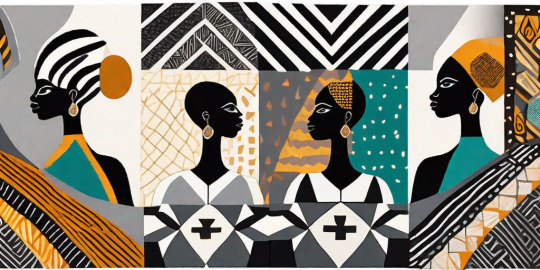
Bakongo spiritual protections influenced African American yard decorations. In Central Africa, Bantu-Kongo people decorated their yards and entrances to doorways with baskets and broken shiny items to protect from evil spirits and thieves.
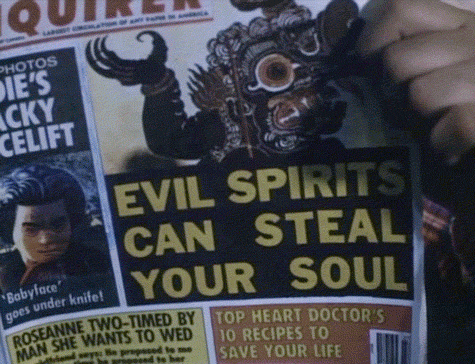
This practice is the origin of the bottle tree in Hoodoo. Throughout the American South in African American neighborhoods, there are some houses that have bottle trees and baskets placed at entrances to doorways for spiritual protection against conjure and evil spirits.
In addition, nkisi culture influenced jar container magic. An African American man in North Carolina buried a jar under the steps with water and string in it for protection. If someone conjured him the string would turn into a snake. The man interviewed called it inkabera

#inkabera#nkisi#hoodoo#african american#african traditional religions#kongo#bantu#central africa#north carolina#bottles#african#afrakan#kemetic dreams#africans#brownskin#afrakans#african culture#afrakan spirituality#glass#dishware#wood#glassware#hearts
228 notes
·
View notes
Text
The Hoodoo That You Do
Hoodoo first and foremost is a closed practice.
Within a western audience, the concept of a closed practice can be rather challenging for many, as it runs entirely contrary to the notions we are brought up believing surrounding religion in the West.
Socio-culturally, religion in the West has evolved under the mantle of Christendom. This evangelizing religion characterized by its soteriology(savior ideology) , ease of access, and proselytizing habits is open to all, radically so. All you need is to accept Christ as your personal Lord and Savior, and live righteously according to the Bible to secure eternal salvation. In many respects, Christianity uniquely conquers the mystery religions of old, characterized by their distinctive intimacy with the divine, secrecy and ritual, and subverts it, by making it universally open to all and actively telling you about it.
This line of thinking regarding "closed practices" can also be difficult with many western minds that have had extensive influence from movements such as the “New Age” movement, which seeks to bring together unrelated material spiritual identities under one umbrella.
Many people in the “New Age” movement have been largely influenced by the writings of the Theosophical society, which were some of the first writings on Dharmic religions available to a broad audience in accessible languages in western countries. This means that many of these individuals ideologically do not believe in the idea of culture since they eschew the cover of self, many believe we reincarnate across familial lines, species and even galaxies, fall prey to solipsism and claim that they themselves are the only real thing that exists, therefore everything is open to them, or purport an intrinsic universal connection through the Jungian collective consciousness that makes all things open to them. Having a unique gnosis dependent on your religious affiliation is normal and expected, using it to harm others is not.
Similarly, Christianity undermines the concept of ethnic religions and cultural religions which are predicated upon being born into them, or having immediate access into certain respective belief systems for validity in practicing them. Finding Divinity in the Christian tradition has nothing to do with where you were born, who you are or how you were brought up, but rather, is entirely up to ideology, practice, and a consistent theme of universalism.
However, as stated prior, due to ethnic and cultural religions being experiential, they are much more tied to a way of life, being, and a contextual identity in order to operate within the cosmological framework. This can be ancestral; do you descend from the founders of the tradition, are you connected by blood in some significant way in recent history? Land-based, i.e venerating a particular river, mountain, cave etc. And lastly, communal, do you speak the liturgical language of the religion, do you eat the same foods, do you understand the offerings? Many ADRs fall into the aforementioned pattern above. Many Hougans and Manbos will tell you that there are Lwa(Intercessory divinities in Vodou/Voodoo) that can only be summoned on Ayiti, making it a uniquely land based practice, and while in Santería, Boromú, an Orisha associated with the desert,and dryness, all but disappeared in lush and tropical Cuba. Most, if not all religions do start as ethno-religions, and many of them still have vestiges of these ideas present within them, and despite the open and universal evangelism of Christianity, even its spiritual practices fall into some of the land specific beliefs and functions mentioned previously.
It is in this contextualization of land, self and identity, that we begin to understand Hoodoo as not merely a “folk magic” practice, but a Magico-Religious tradition uniquely conjoined with the cosmological spiritual experience of Soulaani people in the United States. Hoodoo, like many American ADRs, is plantation religion, and as with the mentioned ADRs above, Vodou and Santería respectively,is syncretist in nature and a highly Africanized interpretation of the Christian faith which was violently enforced upon the enslaved.
Hoodoo historically is a belief system that was foundationally built as a form of resistance to European oppression, violence and abuse. With an emphasis on ancestor veneration, figures such as Nat Turner, Harriet Tubman and Frederick Douglass are heralded as elevated community ancestors, whilst figures such as High John The Conqueror, a mythic African king who could outfox any Slaver or false master, is deigned a powerful, worthy, and venerable Spirit.
The cosmology of Hoodoo, while being deeply Christian, is Animistic in nature and boasts a large host of Land and Place spirits with whole identities and person-hoods. Some of these spirits are “Elevated Ancestors” similar to the saints of Orthodox and Catholic traditions, while some of them are entirely natural in origin such as Simbii or Samunga.
Hoodoo, similarly to the American south from which it originates, exists equally in a Protestant and Catholic context, and also incorporates Native American wisdom and land knowledge into its Theological foundation because of Indigenous admixtures in Black populations, and vice versa, as can be seen by the Florida Seminole tribe with it's high afro-indigenous population to this day and many more.
With its context, it is no wonder that people feel that Hoodoo is an open practice, by its very origin, it is an act of black labor, meaning, it's meant to be exploited. All black labor, be it intellectual, physical, emotional or in this case, spiritual, is an open and free resource that can be cheerfully parasitized from by a broader audience, without acknowledging its history, origins or foundations. This unfortunate reality extends even beyond the Black American experience and universally unites the Black diaspora in imperialist or colonial states worldwide. When researching the origins of certain foods, dances, customs and ideas, it will be difficult to find the genuine full hearted acknowledgement of the enslaved and their contribution to broader knowledge and culture, this is the case in Latin America as well in both material and spiritual culture.
The colonial state chooses what is “Everyones” or rather, “American” and what is “Black” at any given time, and can choose to revoke and review these designations at will. A particularly clear example is Jazz music.
What once started as the herald of reefer madness, debaucherous devil music and depravity, has become the backdrop of urban luxury, sophistication and wealth. This is of course after the domestication of jazz at the hands of predominantly white musicians, who made it more palatable to the broader audience and it's popularization among the rich and famous.
Another example is soul food. What many consider to be “southern cuisine” is uniquely Soulaani in origin, however, due to the overall positive reception, accessibility and good reputation of soul food it became subsumed into the greater American identity not as a black invention, but an American one.
Similarly, Hoodoo received much of the same treatment in the late 80s- 90s. Instead of the lowbrow superstitions of slaves, Hoodoo was rebranded as a distinctly American “hodgepodge” practice, meant to appeal to aesthetics surrounding pastoralism,the rustic rough and ready, and a peculiar edginess, ethnic enough to bite but close enough to home not to leave a scar, after all, Hoodoo was never African according to Ross, and Hoodoo “Authorities” such as Yronwood “The earliest usage of the word “hoodoo” is connected with Irish and Scottish sailors, not African slaves, and may be a phonetic pronunciation of the Gaelic Uath Dubh (pronounced hooh dooh) which means evil entity or spiky ghost. In the mid 19th century, cursed, abandoned “ghost ships'' were called hoodoo ships or were said to have been hoodooed.”(2021,Ross).
The ability for the colonial machine of the U.S to change and claim things from being one thing, and subsume it into a greater American identity without any of its former history, or identity, is one of the things that makes colonial nations so distinctly villainous in the continued exploitation of marginalized identities. Such as Britain's National dish being Chicken Tikka Masala without even acknowledging the incredibly dark history of the East India Company and its dark impact on the whole of the Indian subcontinent. This consumption of identity is the reason why the black American appears to be “without culture”, and why Black Americans themselves can occasionally feel bereft of a unique identity. Often noted by others across the Black diaspora, Black Americans are often the butt end of everyone's jokes from the Caribbean, Latin America and Africa itself. This “stateless” identity sometimes displayed by Black Americans is by design by the colonial state, and a symptom of religious displacement and spiritual abuse at the hands of said colonial powers.
This powerful and calculated form of psychological warfare and its effects can be seen in the likes of Hebrew Israelites who claim to be the original Jewish diaspora, Kemetics who claim to be the original Egyptians and those who claim to be the original Native Americans. This speaks to a desperate longing to belong to something that goes back centuries, that is ancient, and worthy and powerful, none of them wanting to claim the legacy of slavery and its ramifications. With many Black Americans struggling to accept the lived history of chattel slavery, who will proudly embrace this “plantation religion”?
With these contributing factors, Hoodoo can come across as being either a failed attempt at reconnection conceived in the minds of desperate African Americans, a made up ahistoricism (as is often asserted in the case of Voodoo in Louisiana) or a genuinely all American folk practice open to all with no authority, order, or true history.
In fact, referencing a broader global view of African Americans, their customs, practices and identity,a global audience inverts the name into American Africans. A culture and identity that is a product of the eurocentricity and whiteness around it. America appears to be the land of “The Whites” and a “Second Europe” in public perception. However, many of these narratives come from individuals who have either; A. Never set foot in America or B. Decided that they would base all their perceptions off of an experience they had on a trip they took to Greeley Colorado in 2009, and movies. Neither of these are accurate as the American identity is not homogenous.
Hoodoo, while originating in the American South, is a land-based spiritual practice. Subsequently, it has evolved tremendously as it made its way Westward and North among the black diaspora itself. All spiritual practices, particularly land based practices, are beholden to regionalism. Regionalism is the antithesis of homogeneity. It is reflexive to categorize the gamut of all things with “American” origins as one homogenous mass, but this is both intellectually and materially disingenuous. All ADRs are regionalist, and this alone creates a dramatic difference in said practices.
Take for instance the various emanations of Palo, with four major denominations, Monte, Kimbisa, Briyumba and Mayombe. These four distinct Theological traditions evolved separately, largely in part because of geographical differences and different leadership. These seemingly subtle differences evolved overtime into hallmarks of an identity in how each sect handles spirits, the spirits they venerate, language(s) used, and major beliefs pertaining to cosmology and world structure. Notice however that all of these originated on the Island of Cuba. Cuba is roughly 750 miles long and 60 miles wide, driving from Denver Colorado to Billings Montana is 693 miles and takes around 10 hours to drive, while it typically takes only one hour to drive around 60 miles. The variety of spiritual beliefs in one tradition in a stretch of 750 miles is profound, and this isn't even taking into account the other traditions on the island, so why would we expect it to be different in the United States?
Which leads me to the question, what is the Hoodoo you do? Do you know its region, its history, its spirits? Just as there isn't a generic “Palo” tradition, or a Generic Vodou/Vudú/Voodoo, which also boast a robust number of lineages, most notably Tcha Tcha and Asogwé, there is not a “generic” Hoodoo, and the question becomes less about whether or not it's closed(it is), and more about it's cultural relevancy. The Hoodoo of a third generation New Yorker is going to look wildly different from the Hoodoo we see from a third Generation Californian, and let's add a caveat, the Hoodoo you see from a third generation Californian in the Bay area is going to be different from the Hoodoo from a Los Angeles Hoodoo, because of admixture, geography, and exogenous and endemic cultures in the region. In that same vein of inquiry, do you draw your lineage from the Baptist tradition of Churches, AME, Catholic, African American Spiritual tradition? All of these differences make for a different practice, and different structure.
Among the variations and differences in the Hoodoo tradition of the U.S also comes differing and various cultural attitudes to Hoodoo itself. In the broad Americas(the Caribbean and LATAM Included) the practice of banning and criminalizing Black and Indigenous spiritual practices was incredibly common and could be as dire as even leading to an individuals death “After emancipation, many countries in the Western Hemisphere passed new legislation attempting to suppress the religious practices of the formerly enslaved under the guise of “civilizing” their populations. Countries like Brazil, Jamaica, Cuba, and Haiti enacted laws that prohibited persons from engaging in “superstitious” rituals, fortunetelling, vagrancy, and similar practices. In the United States, African American herbalists and sages (whom the media described as “voodoo doctors”) were also arrested for providing medico-religious and divination services. However, once again, the U.S. government deployed generally applicable laws to suppress these practices; they did not craft new legislation to target the “superstitions” of the formerly enslaved. These individuals were charged with contravening laws against obtaining money by false pretenses, mail fraud, practicing medicine without a license, and related offenses.”(Boaz, 2017). Because of this, black America did their best to disassociate with “superstitions” and “barbaric” customs to avoid further discrimination and being targeted. If you went up to a black elder and asked them what “Hoodoo” was, they'd probably slap you in the gums and call down Holy Ghost fire upon you and yours. It wasn't until 1996 that the American Indian religious freedom act was codified into law after years of indigenous communities enduring the same discrimination as Black ones for alternative spiritual customs and traditions could finally safely practice their own religious and spiritual customs without fear, and these attitudes still linger in both communities respectively.
With all that being said, the question remains. Why must it be Hoodoo that you do? Were you adopted into a family that lovingly shared it with you from the time you were young to now? Did you break bread with these people, do you fight for their liberation with every breath? Do you really think being black in a “past life” grants you access to the trauma you most likely care very little about in this present one?
Magico-religious folk customs are a dime a dozen, many, open! Some closed. Hoodoo however, is contingent upon the social memory of slavery, oppression and a fight for justice. When putting the spirits to work, do you do so with a spectral whip in your hand, and the entitlement to Black bodies and Souls of those who came before you? The joy of learning and spiritual specificity is that you can find a practice you resonate with out of the multitudes that litter the masses of the American continent that may be socio-culturally relevant to you. Such as Italian stregheria which is prominent in some parts of upper Appalachia and New York, Ozark and Appalachian granny magic, Cajun Traiteur, Spanish American Brujería of the Southwest (as in SPAIN),Pennsylvania Dutch Braucherei, there are even Cunning folk practices associated with the Mormon church and Utah. Some of these despite being of European American Origin, are also closed because they are experiential.These are all uniquely American in nature, this is excluding places outside of the U.S who also have a multitude of open mystical practices, such as Ancient Egyptian Heka, or Hellenic Göetia, none of them with the baggage of Indigenous and Black trauma as an aesthetic.
Ultimately, everyone will do what they want and that's just a fact of life, I however hope this helps you stop and think of the damage you do to your Black and Brown siblings whose ancestors died for the right to pray to a God that looked like them when you insist on the right to access to BIPOC labor spiritually,mentally and physically.
#hoodoo#spiritualism#african american spirituality#soulaan#espiritismo#atr#african traditional religions#african diasporic religions#vodou#vudu#voodoo#santería
73 notes
·
View notes
Text
Tag yourself!
{made with the Ancestors and Great Spirits of the African Diaspora in mind, here's what I associate with each day of the week and the children of the diaspora born therein:
Monday's child is fair of face
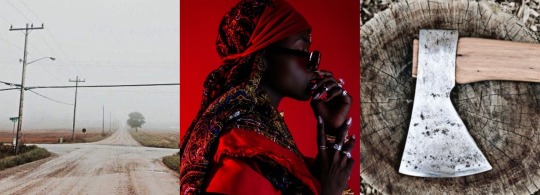
Tuesday's child is full of grace
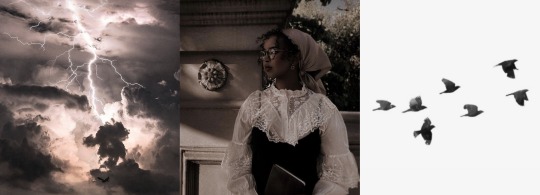
Wednesday's child is full of woe
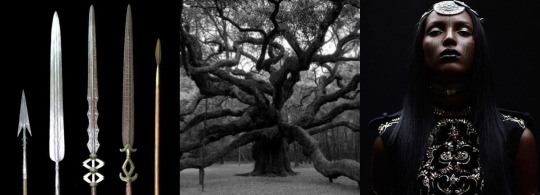
Thursday's child has far to go
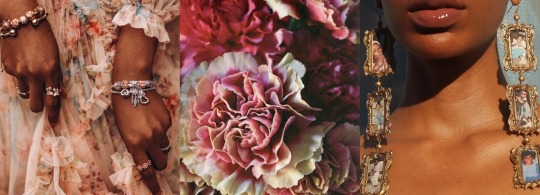
Friday's child is loving and giving
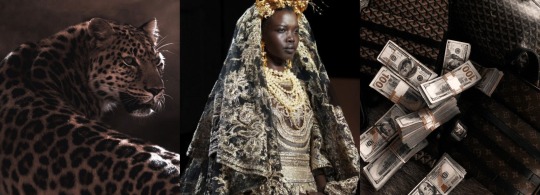
Saturday's child works hard for a living

And the child born on the Sabbath day
Is bonny and blithe, good and gay.
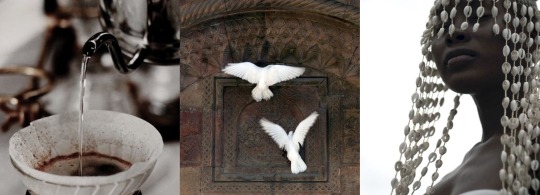
Monday: masters of finding new roads and moving forwards, tearing down blockages, trailblazers and warriors. Artists of all kinds, writers, poets, singers.
Tuesday: embodiment of thunderstorms, winds, omens, they're powerful conjurers with hot hands, always busy, always moving. Often times scholars, historians.
Wednesday: defenders, protectors, of humanity and nature as a whole. Warrior spirits at their core, but also great diviners and mediums.
Thursday: eloquent muses of the arts of love and war alike, great beauties who lead armies with equal charm and force. Sweetening, love and luck workings come easy to them.
Friday: personification of abundance and status. A commanding presence. Building legacy, great manifestors and conjurers, specially for work and finances.
Saturday: guardians of waters and the beyond. Community leaders, gifted healers, divine messengers. Carrying all the wisdom of the Elders and Ancestors.
Sunday: priests and priestesses that defy status quo, very old Ancestors coming back to reshape and rebirth reality. They will enter your life and purge every aspect of it.}
#Hoodoo#Rootwork#Conjure#Black Conjure#African american conjure#Hoodoo aesthetic#Hoodoo academia#I've had this in my drafts for so long!!!#enjoy :')#ATRs#ADRs#African Traditional Religions#African Diasporic Traditions#African Diasporic Religions#African Diaspora#afrolatine#afrolatinos
397 notes
·
View notes
Text

Mardi Gras carnivaler, Mystic Medecine Man, United States of America, by Danielle C. Miles
#afroamerican#african american#united states of america#america#north america#folk clothing#traditional clothing#traditional fashion#cultural clothing
253 notes
·
View notes
Text
I am tired Of claiming beauty where There is only truth:
Jericho Brown, The Rabbits
#Jericho Brown#The Rabbits#The Tradition#beauty#beauty is truth#truth#African American literature#poetry#poetry quotes#BIPOC author#Black History Month#quotes#quotes blog#literary quotes#literature quotes#literature#book quotes#books#words#text
15 notes
·
View notes
Text

Gloria the Cavegirl
I was wondering what the 1970s blaxploitation bombshell Gloria Hendry would look like had she been cast in one of the fanciful "caveman" movies (such as those by Hammer Films) that were in vogue at the time. And so this sketchbook doodle was born. If you ask me, given what we now know about the African origins of humanity, not having Gloria as a Afro-sporting cavegirl in any of those films was a missed opportunity.
Her outfit here is of course inspired by that of Raquel Welch's character in "One Million Years BC".
#gloria hendry#blaxploitation#afro#african-american#african#black woman#woman of color#dark skin#bipoc#cavegirl#cavewoman#prehistoric#fantasy#tribal#drawing#traditional art#art
15 notes
·
View notes
Text
Hoodoo Lemon House Cleansing.
This working involves using lemons. Now why lemon's? Because lemon's is a good cleanser. It's such a good cleanser that there a lot of house cleaning products with lemon.
This cleansing is for someone who feels like when there in there Apt/House it just done feel like home. Like you don't belong. Then this will help.
Get a bag of lemon's and cut them in half. Put one half of a lemon in a corner of each room. Then sprinkle some holy water through-out the house. Last take two white candles put one in the by the front door and one by the back door and light both.
Also checkout my post on floor cleansing.
#southern magicc#like and/or reblog!#google search#follow my blog#southern hoodoo#traditional hoodoo#rootwork#ask me anything#traditional rootwork#rootwork questions#african american hoodoo#african american spirituality#Lemon spell#House cleansing#Cleansing spell#hoodoo cleansing#spiritual
12 notes
·
View notes
Text
African American Culture (Gullah)- Sweetgrass baskets
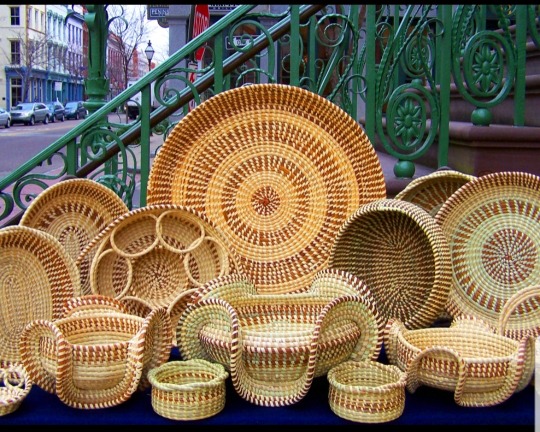

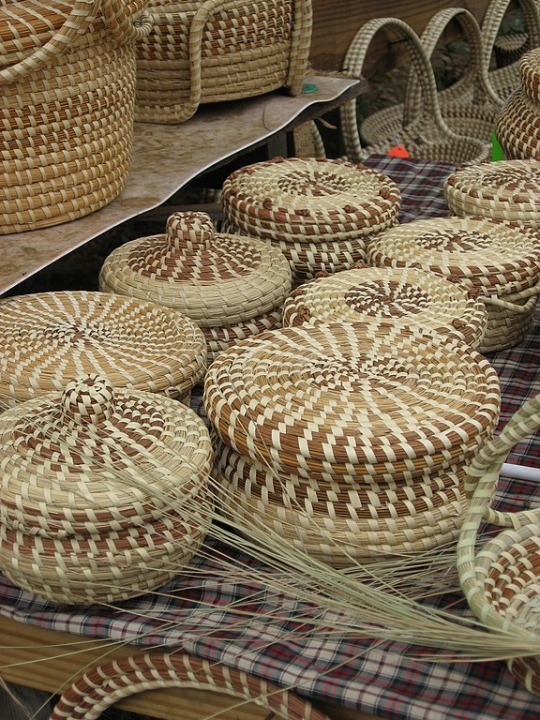

#aa culture#african american#black americans#culture#african american culture#tradition#sweetgrass baskets#gullah geechee#black american culture
105 notes
·
View notes
Text
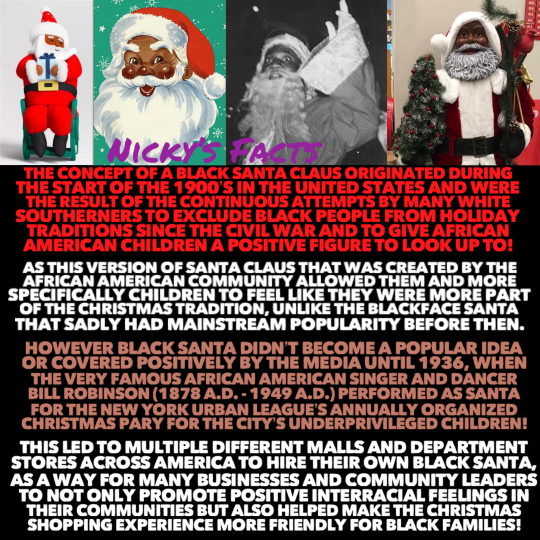
Black Santa Claus’s origin story!
❄️🎅🏾🎁
#history#happy holidays#black santa#united states#christmas#african american history#santa claus#bill robinson#holiday tradition#black christmas#christmas history#historical figures#black tumblr#role model#new york city#harlem#african american culture#childhood#black community#black excellence#soft black girls#christmas girl#holiday season#1900s#american history#christmas traditions#nickys facts
76 notes
·
View notes
Text

In light of a tragedy involving Mystic Lipstick aka Akoya, here are few quick witch tips that are invaluable for practitioners of any skill level.





#hoodoo#the love witch#black femininity#black spirituality#bipoc mental health#mental health#practical witchcraft#witch blog#witches of color#haitianvodou#aphrodite#paganblr#occult#astrologersofinstagram#daily astrology#astrology#witchcraft#witchcraft community#jewitchery#brujas of tumblr#brujería#conjure#rootwork#folk magick#african traditional religons#african american folk magick#mental heath support#new age#Wicca#tarot community
52 notes
·
View notes
Text

Saturday Night, Birmingham, Alabama, c.1940. Arthur Rothstein. Silver gelatin.
#arthur rothstein#black and white#photography#african american#saturday#tradition#culture#foto#fotografia#fotographie#1940#vintage
106 notes
·
View notes
Text

Afro Americana (Version II), digital, 2024
Somewhat of a self portrait but mostly an illustration inspired by the Black American heritage flag. I prefer this version cause it blocks out my eyes with the cowrie shells lol, but also cause it references art history and my spirituality!!
Note: I won't ever speak in-depth about my practices, but I don't mind sharing a little surface-level info. 😗
In my art history classes and from my own research, I learned that historical African art often used cowrie shells to represent eyes. These shells can relate to protection, wealth, and prosperity. They also connect to the ocean and water spirits in African Traditional Religions (ATRs), both typically representing abundance, wisdom, beauty, wealth, prosperity, tragedy, and so many other vast ideas reflecting the alluring mystery and possibilities of the seas.
Cowrie shells are, of course, popular and significantly used within Afro-diasporic cultures. It's normal to see the shells adorning hair, clothes, decor, in art, etc.
Eyes are the window to the soul. As an afro-spiritualist, I feel that my soul, spiritual energy, ambitions, passions, and future plans are linked with the guidance and sometimes personalities of my ancestors and other higher spirits.
I'm open to seeing other interpretations for this work as well :)

Woman with Cowrie Shell Eyes
19th century
Wood, cowrie shell, and pigment
Unknown artist

Black American Heritage Flag
Adopted on March 5, 1967
Designed by Melvin Charles & Gleason T. Jackson
#black artist#art history#black art histroy#african art histroy#spirituality#afrospirituality#black american heritage flag#african american art#digital art#illustration#self portrait#spiritual art#black pride#black history#black culture#african american#african traditional religions#art meaning#art yap#fel's artwork
11 notes
·
View notes
Text
Recently watched The Skeleton Key again and was not too pleased with how Hoodoo was portrayed (especially with them saying it started in Louisiana, Hoodoo started throughout the south simultaneously). I’m noticing that the more and more I watch a movie, the more I kinda be like.. why did they portray it like that??
But I wanted to ask all of my ATR practitioners out there, hoodoo, voodoo, lucumi, isese, santeria, obeah, etc., have you ever watched a movie and felt as if your practice was portrayed in its authentic and complex form??
#this is for the diaspora#african traditional religions#atrs#Santeria#palo mayombe#hoodoo#voodoo#obeah#candomble#isese#lucumi#21 divisions#African diaspora#diasporic religions#representation#cultural representation#culture#African American#afro caribbean#afro latina#black spiritualism#black spiritualist#african american spirituality#hoodoo tumblr#black spirituality#black tarot readers#african american culture#rootwork tumblr#rootworker tumblr#black tumblr
17 notes
·
View notes